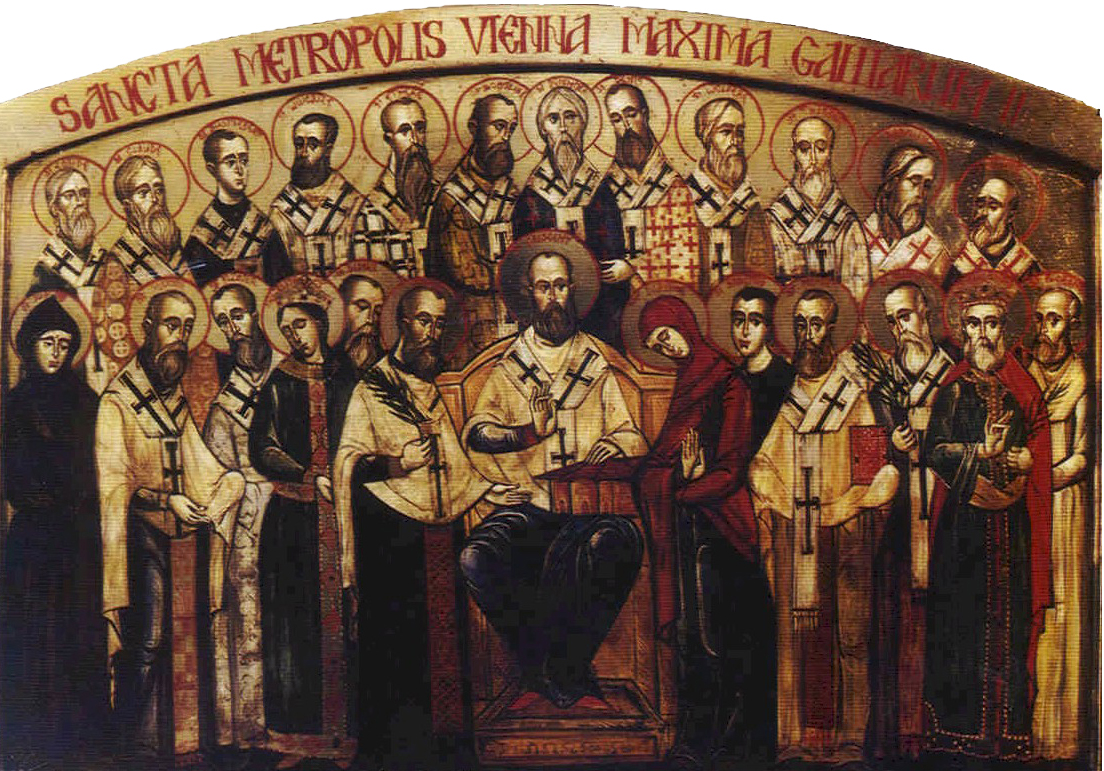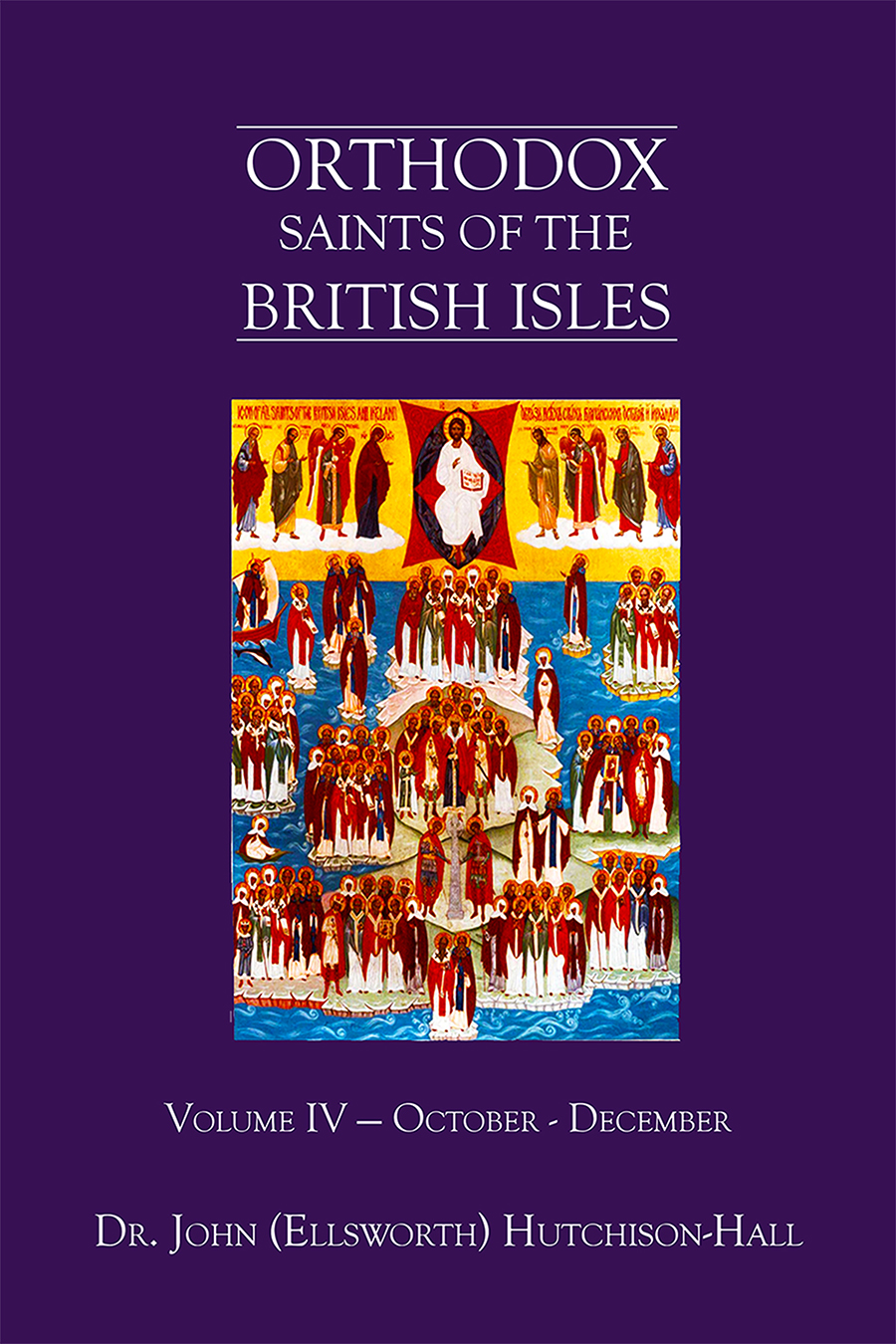
Orthodox Saints of the Pre-Schism
See of Rome
18th October (NS) — 5th October (OS) 2025
ALEXANDER of TRIER, (Third Century), one of the countless number of Christians martyred at Trier in the present-day German state of Rhineland-Palatinate, during the Diocletianic Persecution (303–313).
APOLLINARIS (AIPLONAY) of VALENCE, a member of a prominent Gallo-Roman family, and elder brother of St. Avitus of Vienne (5th February). St. Apollinaris served as the fifth Bishop of Valence in Burgundy (east-central France) from 486 until his repose, circa 520.
ATTILANUS, a native of Tarazona near Zaragoza in present-day Aragon, Spain, who worked with his friend St. Froilan (3rd October) to revitalise monastic life at Moreruela Abbey close to Zamora in Castile. St. Attilanus was consecrated Bishop of Zamora on Pentecost, 990 and reposed in 1009.
AYMARD of CLUNY, the third Abbot of the Abbey of SS. Peter and Paul of Cluny (abbaye Saint-Pierre et Saint-Paul de Cluny — Cluny Abbey) 942–circa 952. Succeeding St. Odo of Cluny (11th May), St. Aymard ruled Cluny for about ten years before blindness led him to resign in favour of St. Majolus of Cluny (11th May). St. Aymard reposed in 965.
BONIFACE of TRIER, (Third Century), another of the countless Christian martyrs at Trier in the present-day German state of Rhineland-Palatinate, during the Diocletianic Persecution (303–313).
FIRMATUS of AUXERRE and FLAVIANA of AUXERRE, (Date Unknown), St. Firmatus, a deacon, and St. Flaviana, a virgin, are venerated at Auxerre in France. Whilst mentioned in the Martyrologium Hieronymianum, there is other no information about them extant. It is possible they may even be two of the companions of St. Palmatius (vide infra), some of whose relics appear to have been brought to France at some point.
GALLA of ROME, according to St. Gregory the Dialogist (3rd September), St. Galla was a well born lady who was widowed in the first year of marriage. St. Galla then founded a monastery and hospital on the Vatican Hill, where she led the life of an anchoress, until her repose from cancer circa 550.
MAGDALVEUS (MADALVEUS, MAUVÉ) of VERDUN, a native of Verdun (north-eastern France), who, circa 736 was consecrated the twenty-fifth Bishop of that See. As Bishop, St. Magdalveus urged both the clergy and laity in his care to regularly receive the Sacrament of Confession and attend Liturgy with appropriate reverence. He reposed circa 776.
MARCELLINUS of RAVENNA, either the second or third Bishop of Ravenna (northern Italy), and said by some to have been a wonderworker. Most sources place him in the second half of the third century.
MEINULPH, a nobleman and godson of Charlemagne, King of the Franks (r. 768–814). St. Meinulph founded the monastery of Böddeken (Kloster Böddeken) in in the present-day German state of North Rhine-Westphalia. It is said that he chose the location for the monastery after seeing a stag with a cross in its antlers there. St. Meinulph reposed circa 857 at Böddeken Monastery.
PALMATIUS of TRIER and COMPANIONS, (Third Century), a large group of Christians martyred at Trier in the present-day German state of Rhineland-Palatinate, during the Diocletianic Persecution (303–313).
Get your copy of Orthodox Saints of the British Isles today.
Available at Amazon or your favourite e-bookstore.
BROTHEN and GWENDOLEN, (Sixth Century), beyond their names and records of the local cultus we know nothing of the Lives of SS. Brothen and Gwendolen. St. Brothen is patron saint of Llanfrothen, Gwynedd, Wales where the church is dedicated to him. Both Llanwyddelan, Powys and Dolwyddelan (Welsh for the meadow of Gwendolen), Clwyd, Wales derive their names from St. Gwendolen.
GWEN of TALGARTH, this St. Gwen was the daughter of King St. Brychan of Brycheiniog (6th April), and the sister of St. Cledwyn of Wales (1st November). She was martyred by pagan Saxons at Talgarth, Powys, Wales on 18th October, 492.
Troparion of St. Gwen of Talgarth
Tone IV
O Brychan’s jewel and holy daughter, most pious Gwena,
Thou didst defy the heathen Saxons, thereby winning a martyr’s crown.
Being, therefore, numbered among the saints,
Intercede for us before the Throne of Grace,
that we may be granted great mercy.
GWEN, (Fifth Century), the Lives of the two St. Gwens commemorated on this day are often intertwined, and there is little in the way of reliable information on this St. Gwen. It is believed she was the sister of St. Non (3rd March), which would make her the aunt of St. David of Wales (1st March), it has also been claimed she was the mother of SS. Cybi (8th November) and Cadfan (1st November).
JUSTUS of BEAUVAIS, a nine-year-old child from Auxerre in Burgundy (east-central France) traveling with his father to Amiens in northern France to ransom a family member during the height of the Diocletianic Persecution (303–313). When soldiers confronted them at Beauvais (northern France), St. Justus confessed to being a Christian and was beheaded on the spot. One legend states that St. Justus stood upright and picked up his head, at which sight the soldiers fled.
MONON (MUNO) of NASSOGNE, a hermit in the Ardennes Forest (south-eastern Belgium), originally from Scotland or Ireland. St. Monon was martyred by bandits circa 645 near Nassogne in present-day Belgium.
TRYPHONIA of ROME, (Third Century), a Roman widow and martyr. According to one tradition St. Tryphona may have been the widow of the Emperor Decius (r. 249–251), a persecutor of Christians, or possibly the widow of his son.
Prior to the Schism the Patriarchate of Rome was Orthodox, and fully in communion with the Orthodox Church. As Saint John of Shanghai and San Francisco +1966 said “The West was Orthodox for a thousand years, and her venerable Liturgy is far older than any of her heresies”.
Details of British Saints excerpted from Orthodox Saints of the British Isles.
Details of continental saints from these sources.
In many cases there are several spelling versions of the names of saints from the British Isles. I use the Oxford Dictionary of National Biography version as the primary version with the more prevalent version in parenthesis e.g. Ceadda (Chad) of Lichfield.

